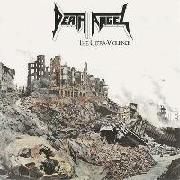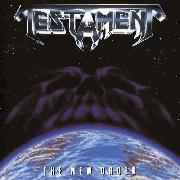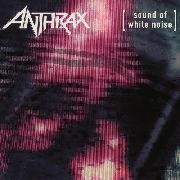|
User
Reviews 32
Approval 98%
Soundoffs 314
News Articles 3
Band Edits + Tags 23
Album Edits 20
Album Ratings 1249
Objectivity 66%
Last Active 05-12-22 12:43 am
Joined 04-15-14
Review Comments 1,245
| The life cycle of a thrash metal band
Had the idea to make this after I realized a LOT of thrash metal bands have a similar history. This list, of course, does not mean to include bands that fizzled out after one or two albums, like Atrophy or Cyclone Temple, and there are many exceptions. For the record, I don't hate Load or Reload. | | 1 |  | Death Angel
The Ultra-Violence
Period 1: Debut. Our journey usually begins in the mid to late 80s. An aspiring band of long haired metalheads, usually white (the dudes used in this example weren't), release a brutal, rifftastic debut. Purists will likely consider this their best album. More examples of this type of debut album include Vio-Lence's Eternal Nightmare, Testament's The Legacy, Sacred Reich's Ignorance, and Exodus's Bonded by Blood. | | 2 |  | Testament
The New Order
Period 2: Development. By somewhere around 1988 to 1990, our band has clearly evolved. The group will probably incorporate slower tempos, melody, atmosphere, and technical showoffy-ness more often by now; however, they have by no means abandoned their roots...yet. An album released in this stage may be influenced by the "long, technical songs" craze that swooped the thrash metal world following the release of Metallica's ...And Justice For All. This more musically developed album can be a followup to the debut, although there's usually an album or two between. If their debut isn't considered their magnum opus, then whatever album they released in their "developed" era from 1988 to 1990 (Or, rarely, 1991) likely will be. More examples of an album released in this period include Megadeth's Rust in Peace, Exodus's Fabulous Disaster, Forbidden's Twisted Into Form, and Coroner's Mental Vortex. | | 3 |  | Anthrax
Sound of White Noise
Period 3: Adaptation. Around 1991 to 1993, it's likely that the thrash band of choice will release a less thrashy, often more melodic or accessible record that seems to be influenced by metal fads of the day. Though these albums may be met with tough reception from thrash purists or certain "hardcore" fans, they can contain some great stuff and receive proper recognition, can be criminally underrated...or they can be mediocre. Other examples of an album released in this period include Metallica's black album, Megadeth's Countdown to Extinction, Testament's The Ritual, or Sacred Reich's Independent. | | 4 |  | Slayer
Diabolus in Musica
Period 4: Decay. Many thrash metal bands dissolve in the mid 90s, either ending their story in the Adaptation stage or skipping this step via hiatus. Bands that faded away as thrash metal's popularity dwindled arguably experienced a more merciful fate, as throughout the rest of the 90s, the group in question will release poorly received, often mediocre records that show very little traces of the band's roots. Not all of these experiments are failures; for example, Testament's The Gathering, released in 1999, is a classic, and others, like Megadeth's Risk, are hated by many but have their fans. In general, however, if the thrash band still lives, this is often where they release their greatest blunder. Even more "conventional" albums from old thrash metal groups still tend to blow, as by this point they've clearly run out of ideas. This period may linger into the early 2000s. Other examples of albums released in this period include Forbidden's Green and Metallica's Load and Reload. | | 5 |  | Heathen
The Evolution of Chaos
Period 5: Resurgence. Many old thrash metal bands regrouped in the early (less common) to mid 2000s and released a "comeback" record. This material will likely contain traces of their Adaptation and Decay stages (assuming they went through the latter), but is usually a sort of throwback to the sound that made them big. You can bet on albums from this period containing some throwaway material. You can also bet on albums from this period being brickwalled. If the band in question has not regrouped following a long period of inactivity, they will likely still release an album around this time considered their best in years. This period is quite broad, ranging from around 2004 to the early 2010s. Other examples of albums released in this period include Metallica's Death Magnetic, Megadeth's Endgame, Exodus's Tempo of the Damned, & Anthrax's Worship Music. Although these albums may be widely praised as magnificent returns to form upon release, they're often forgotten within a few years. | |
SharkTooth
03.30.15 | From what I've seen this list is pretty accurate | InFlamesWeThrash666
03.30.15 | Nice list | Tunaboy45
03.30.15 | Yeah this is spot on | TalonsOfFire
03.30.15 | I've always wondered why these trends exist in thrash bands histories, great list. | SharkTooth
03.30.15 | and now it's featured m/ | Flugmorph
03.30.15 | feature b0ss m/ | TheCrocodile
03.31.15 | Jammed Destruction yesterday m/ | sputnik1
03.31.15 | Awesome list. Gonna jam Forbidden -Twisted into Form | Friday13th
03.31.15 | lol right on | Snowdog808
03.31.15 | I think Endgame was way superior to Death Magnetic and a bigger return to roots, there I said it. | facupm
03.31.15 | not bad | FirstStrikeIsDeadly
03.31.15 | Most people think that, snowdog. Death Magnetic clicked with me more, but I still enjoy Endgame. | FirstStrikeIsDeadly
03.31.15 | Also it's fuckin cool that this got featured, thanks Mr/Ms. Staff Person (I'm still not familiar with how stuff gets featured, I'm assuming mods or something are involved) | TalonsOfFire
03.31.15 | Endgame is definitely better but Death Magnetic is good too, gets great around the middle | FirstStrikeIsDeadly
03.31.15 | All Nightmare Long m/ m/ m/ | LepreCon
03.31.15 | I haven't forgotten about any of those resurgence albums, all the ones you mentioned are great. But Death Magnetic > Endgame | Sabrutin
03.31.15 | Hell yeah The Ultra-Violence and Eternal Nightmare. The former being one of my fav albums ever. m/ | FirstStrikeIsDeadly
04.01.15 | face to face with
DEAAAAAAAAAAAAAAAAAAAAAAAAAAAAAAAAAAAAAAOOOOOOOOOOOOOOoooooooooAAAAAAAAAAAAAAAAAAAAAAAAAAAAAAAAAAAAAAAAAAAAAAAAAAAAAAAAAATH!!!!
*shredding* | FirstStrikeIsDeadly
04.01.15 | One thing I noticed is that all of Forbidden's albums fit nicely into these categories
Forbidden Evil: Debut
Twisted Into Form: Development
Distortion: Adaptation
Green: Decay
Omega Wave: Resurgence | ThrashTillDeath94
04.01.15 | Your pretty much spot on here. Countless bands went through this. I think that Testament probably did the best job of it though. | FirstStrikeIsDeadly
04.01.15 | Testament's "decay" stage consisted of two eh albums (both of which had a few great songs) and one great one. The Ritual, their "adaptation" album, had some great songs on it too. The Formation of Damnation has some great stuff, but imo Dark Roots of Earth blows it out of the water.
I was thinking of including Coroner's "Grin" as an "adaptation" example, as it's definitely their least "thrash" album and seems to incorporate some groove and slight industrial influences, but it's too heavy and "out there" for that. | InbredJed
04.04.15 | I think you did a great job summing up a widely supported generalization that exists in the minds of many ppl who observe the popular thrash/heavy metal movement in the 80s and 90s.
however.... I am tired of seeing 4 and 5 as posterchildren for this as they are among my favourite albums by either band. I feel this way because they (imho) successfully integrated their thrash majesty with (albeit more trendy) alternative songwriting techniques and created something that can serve as a gateway to heavier music for newer listeners, as well as providing an interesting listen (as long as you arent expecting RIB or ATL respectively). | InbredJed
04.04.15 | there was definitely some legitimate suck in the albums that most heavy bands made in the mid-late nineties, but these albums stand apart from that for me.
I definitely rate them above Metallica s self titled slop bucket. | FirstStrikeIsDeadly
04.04.15 | Interesting opinions, but did you mean "3 and 4" since you mentioned ATL? I think most people can admit that Sound of White Noise is good. | Snake.
04.04.15 | there are other genres than thrash btw | FlyheadMetal
04.04.15 | Pretty damn good list. a lot of thrash bands really tried to adapt to the times and failed in terms of popularity or music quality. some of them got one of the other, but few got both. | SpiritCrusher2
04.04.15 | "there are other genres than thrash btw"
fuck off | FirstStrikeIsDeadly
04.04.15 | http://i.imgur.com/KgiVb3F.png
FIRSTSTRIKEISDEADLY 1 SNAKEDELILAH 0 | Snake.
04.04.15 | | SpiritCrusher2
04.04.15 | I don't get it | FlyheadMetal
04.04.15 | seriously | InbredJed
04.04.15 | Ye, 3 and 4
:P | FirstStrikeIsDeadly
04.05.15 | I heard James Hetfield called Only a "perfect song" | evilford
04.05.15 | grats on feature | SharkTooth
04.05.15 | "there are other genres than thrash btw"
fuck off[2] | romulanrancor
04.05.15 | This is really cool. You should do this for another sub genre maybe. | LepreCon
04.05.15 | "there are other genres than thrash btw"
fuck off [3] | Snowdog808
04.16.15 | I'm listening to Green now, and honestly it's a major disgrace to Forbidden's initial two albums and Raw Evil. | FirstStrikeIsDeadly
04.16.15 | How a band can go from writing songs like Step By Step to that fucking album is beyond me | Snowdog808
04.16.15 | Yeah or the debut's title track. I just finished the album a few minutes ago, and anyone can see what I think of it on my profile, namely that it's shit from a band that has no business releasing such a travesty. | vonseux
06.18.16 | awesome | facupm
06.18.16 | CORONER |
|
